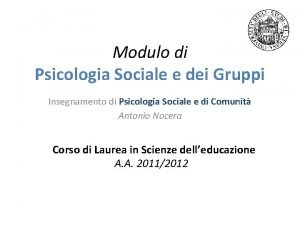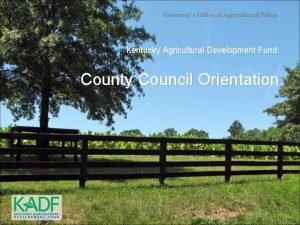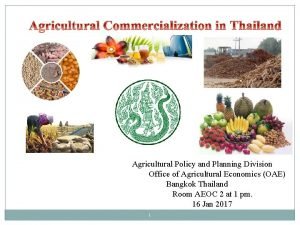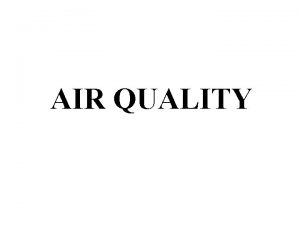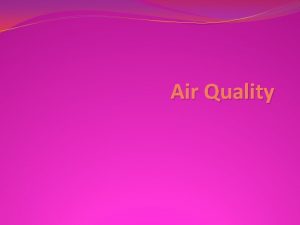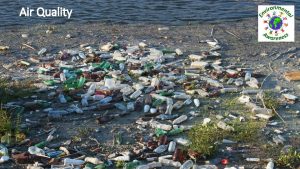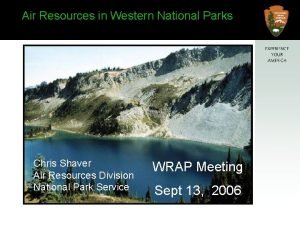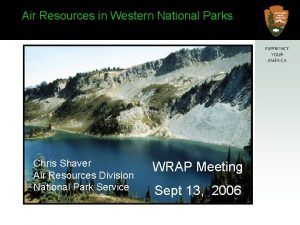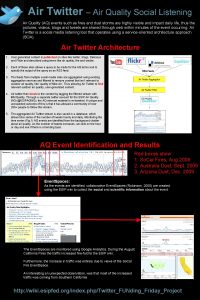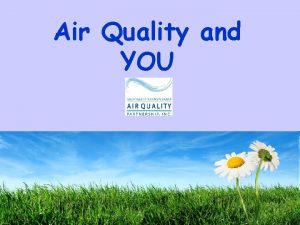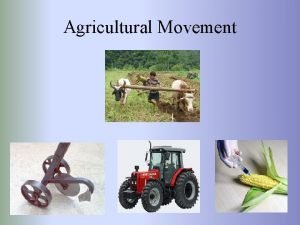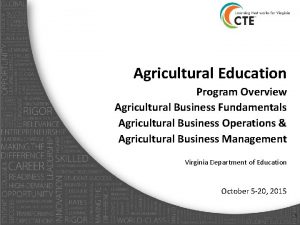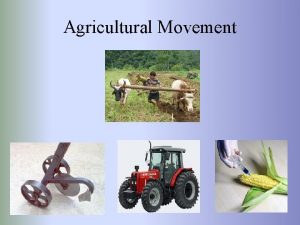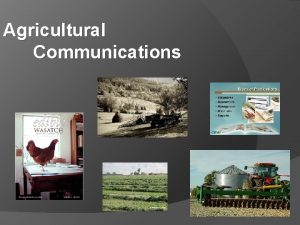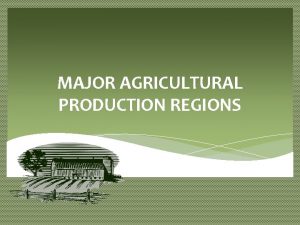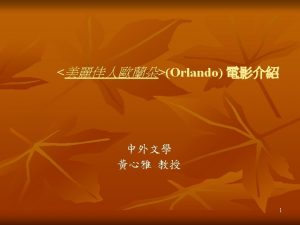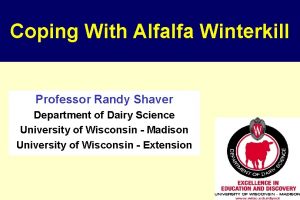Agricultural Air Quality Sally Shaver Office of Air



















- Slides: 19

Agricultural Air Quality Sally Shaver Office of Air Quality Planning and Standards US Environmental Protection Agency Fall 2004 WESTAR Business Meeting October 4 -6, 2004

Ag Strategy Vision Statement Clean Air Sustainable Agriculture Sound Land Management Clean Water Key elements: Scientific assessment Outreach and education Implementation/compliance

What are the issues? • Ozone and PM designations and implementation – Fugitive dust – Conservation management practices • Permitting – Title V – New source review – Offsets • Pesticide application

What are the issues? (cont) • Agricultural equipment – Title II rule amendment - pumps • Fire – Prescribed fire, wildfire – Blue. Sky/Rains • AFO/CAFO – Particulate Matter (PM) – Hydrogen Sulfide (H 2 S) – Ammonia (NH 3) – Odor

Attainment and Nonattainment Areas in the U. S. 8 -Hour Ozone Standard Attainment or Unclassifiable Areas (2668 counties) Nonattainment Areas (432 entire counties) Nonattainment Areas (42 partial counties)

State Recommendations for Fine Particles National Ambient Air Quality Standards Nonattainment (full county): 142 Nonattainment (partial county): 9

EPA Response to State Recommendations on PM 2. 5 Designations – June 29, 2004

Counties Designated Nonattainment for PM 10

Title V – NSR Ag Impacts • Title V could apply to farms, resulting in: - Paperwork burden - Unnecessary public scrutiny - Little if any benefit for the additional burden - Continuous compliance assurance monitoring and reporting - Biosecurity impacts

Title V – NSR Ag Impacts (cont) • Change in farming practices could trigger NSR (NSR being the bigger issue), resulting in: - Requirements to obtain offsets for emissions increases - Applying lowest achievable emissions rate to new equipment or new practices - Paperwork burden

Pesticide Application • • VOC Toxics Methyl Bromide Spray Drift

Agricultural Equipment • Emissions from farm equipment – PM and NOx • Irrigation pumps – Stationary source v. mobile – State regulated – Mobile source – national rules apply – Title II • Alternatives – Cleaner burning diesel engines – Natural gas engines – Electric engines

Fire

Fire • Pollutants: – PM – Regional haze – Episodic ozone – Air toxics • Impacts: – Water runoff to streams – Air quality – Visibility – Smoke

EPA’s Fire Policies • EPA acknowledges the use of fire as an efficient and economical land management tool in maintaining the health of fire-tolerant and firedependent plant and animal ecosystems – Maintain species diversity – Enhance agricultural production – Eliminate threat of disease – Reduce catastrophic wildfires • PM-10 Natural Events Policy (1996) • Interim Air Quality Policy on Wildland Prescribed Fires (1998) • Agricultural Burning Policy (on hold)

Blue Sky RAINS • Blue. Sky/RAINS (BSR) is an interactive web-based tool that predicts smoke concentrations on a variety of sensitive receptors • BSR couples the latest available science in fire behavior and smoke dispersion from the Blue. Sky framework developed by the USFS with the Geographical Information System (GIS) and sequential database technology of the Rapid Access Information System (RAINS) developed by EPA R 10

Blue Sky RAINS (cont. ) • EPA Region 10 and the USDA Forest Service have successfully operated BSR in the Pacific Northwestern US since March 2003 – Leavitt Initiative - expand the BSR nationwide within the next 1 to 2 years – Currently, a beta version of the BSR that covers all or part of 11 western states is being tested

Animal Feeding Operations (AFO) • NAS Commissioned: – EPA and USDA asked NAS to perform CAFO air emissions study • NAS Study Conclusions: – No reliable emissions factors for AFO exist – Additional data needed to develop estimating methodologies – Current methods for estimating emissions not appropriate – Use process-based approach

Key Features of the Proposed Agreement Industry: - Pay a civil penalty (per facility) - Contribute to nationwide emissions monitoring program ($2, 500) - Make facilities available for monitoring - At conclusion of study, apply emissions-estimating methodologies to identify applicable CAA, CERCLA and EPCRA requirements - Certify compliance with CAA permitting and CERCLA and EPCRA notification provisions - EPA grants limited covenant not to sue
 Shaver
Shaver Shaver emozioni
Shaver emozioni Brad shaver
Brad shaver Hazan and shaver love quiz
Hazan and shaver love quiz Agricultural quality management
Agricultural quality management Ag revolution kentucky
Ag revolution kentucky Office of agricultural economics thailand
Office of agricultural economics thailand Hubungan air dengan tanah
Hubungan air dengan tanah Perform quality assurance
Perform quality assurance Quality management pmp
Quality management pmp Pmbok quality management
Pmbok quality management Define quality assurance in nursing
Define quality assurance in nursing Quality improvement vs quality assurance
Quality improvement vs quality assurance Basic concept of quality control and quality assurance pdf
Basic concept of quality control and quality assurance pdf Quality gurus of tqm
Quality gurus of tqm Crosby's fourteen steps to quality improvement
Crosby's fourteen steps to quality improvement Old quality vs new quality
Old quality vs new quality Sally wants to select an entire paragraph
Sally wants to select an entire paragraph Macdonald manu
Macdonald manu Annilihated
Annilihated

